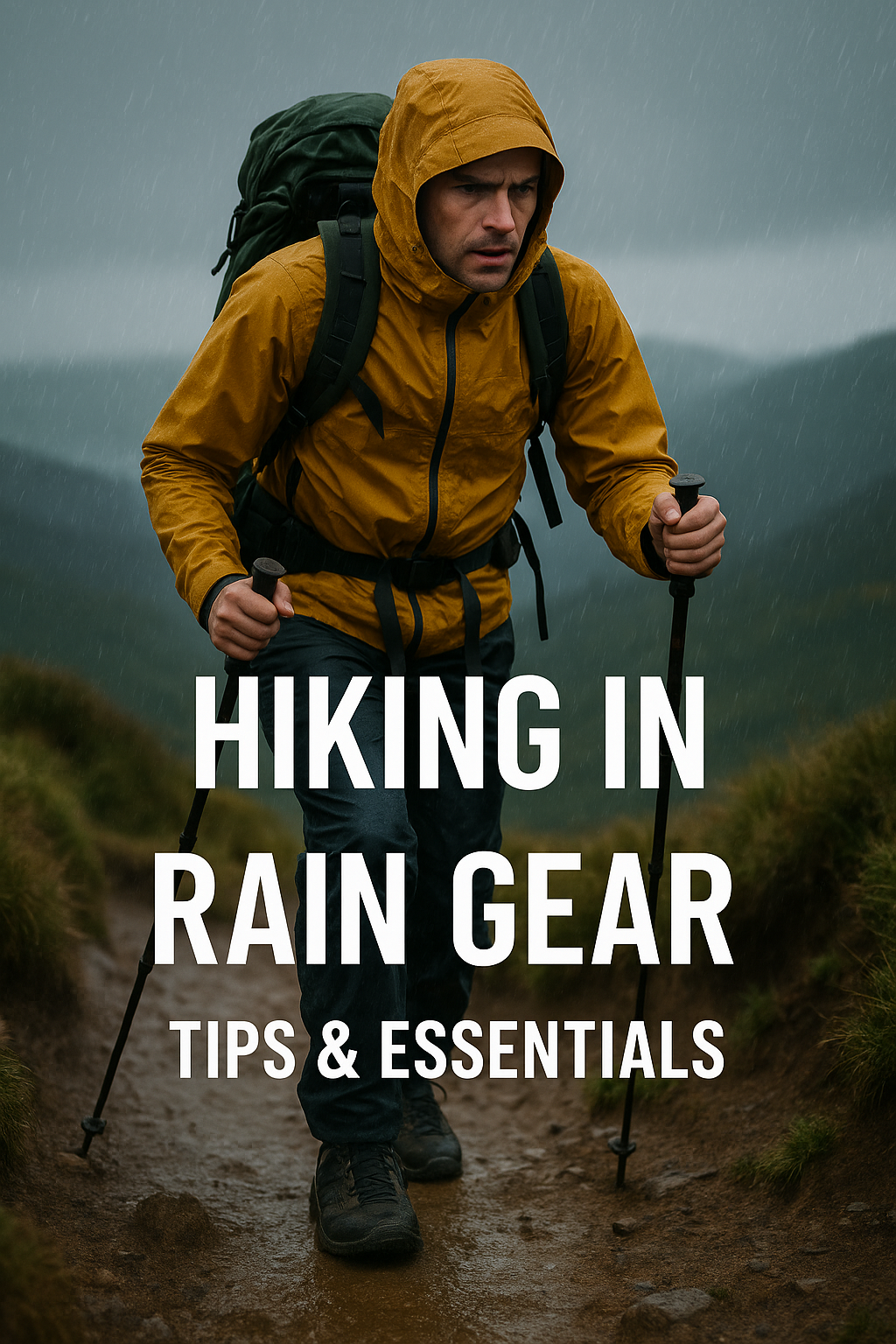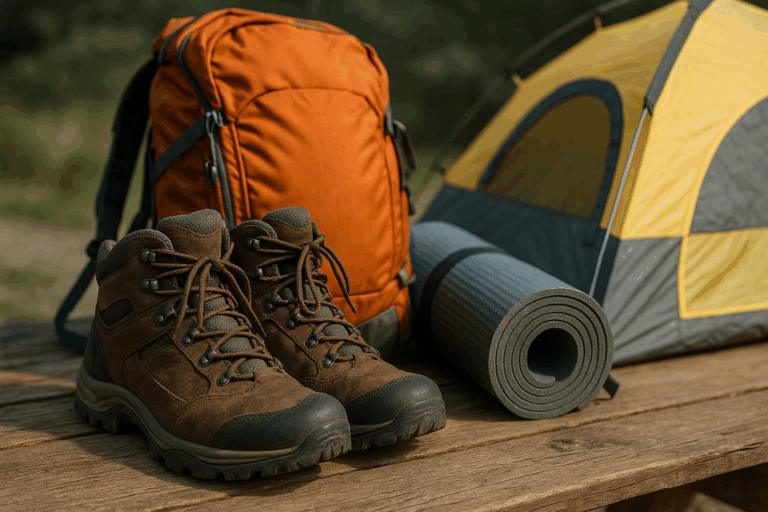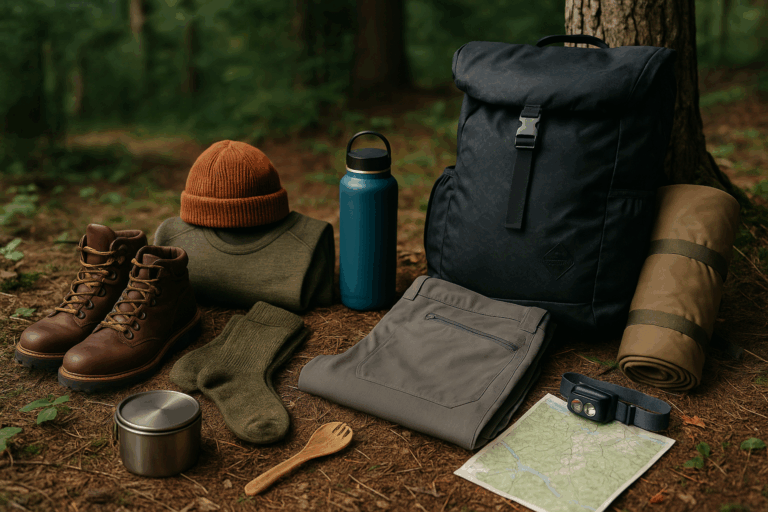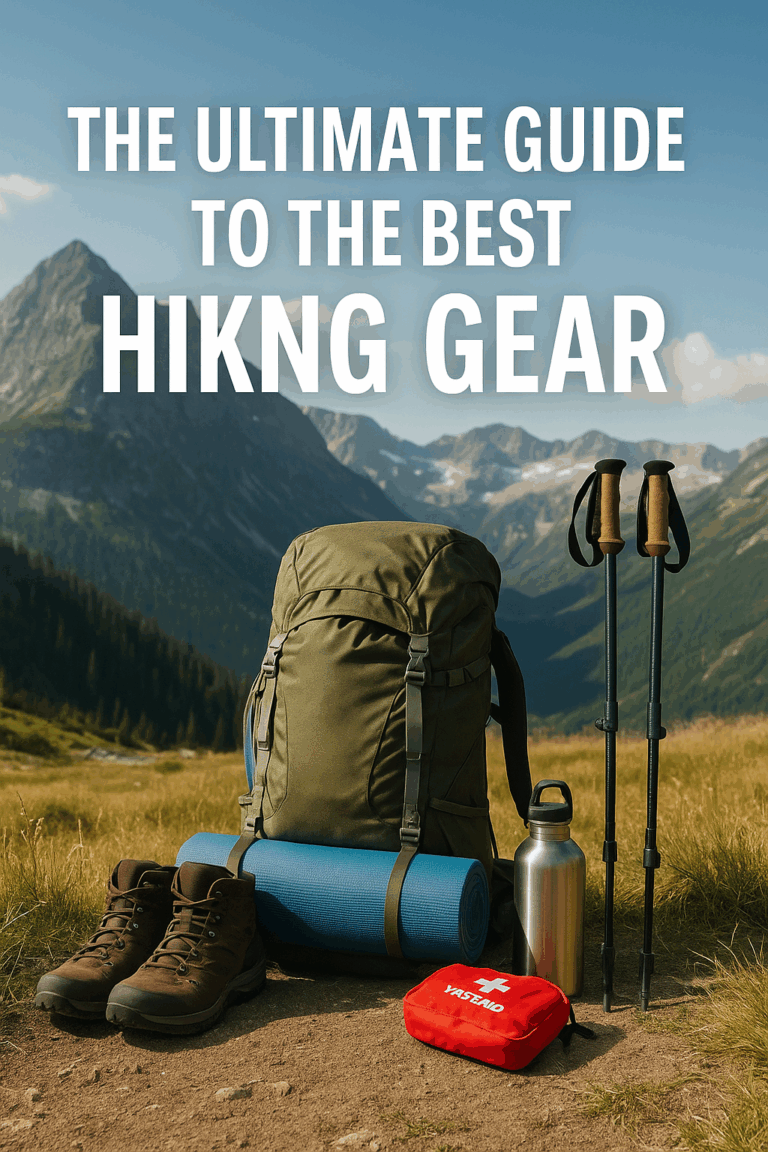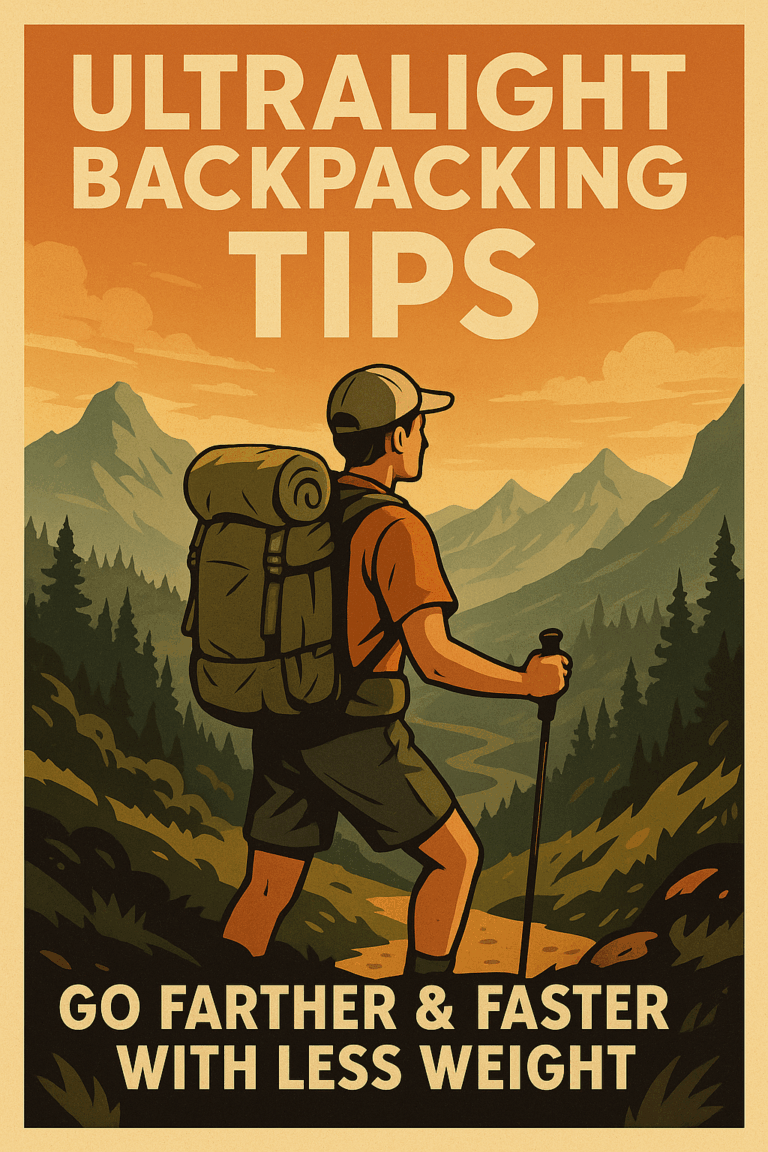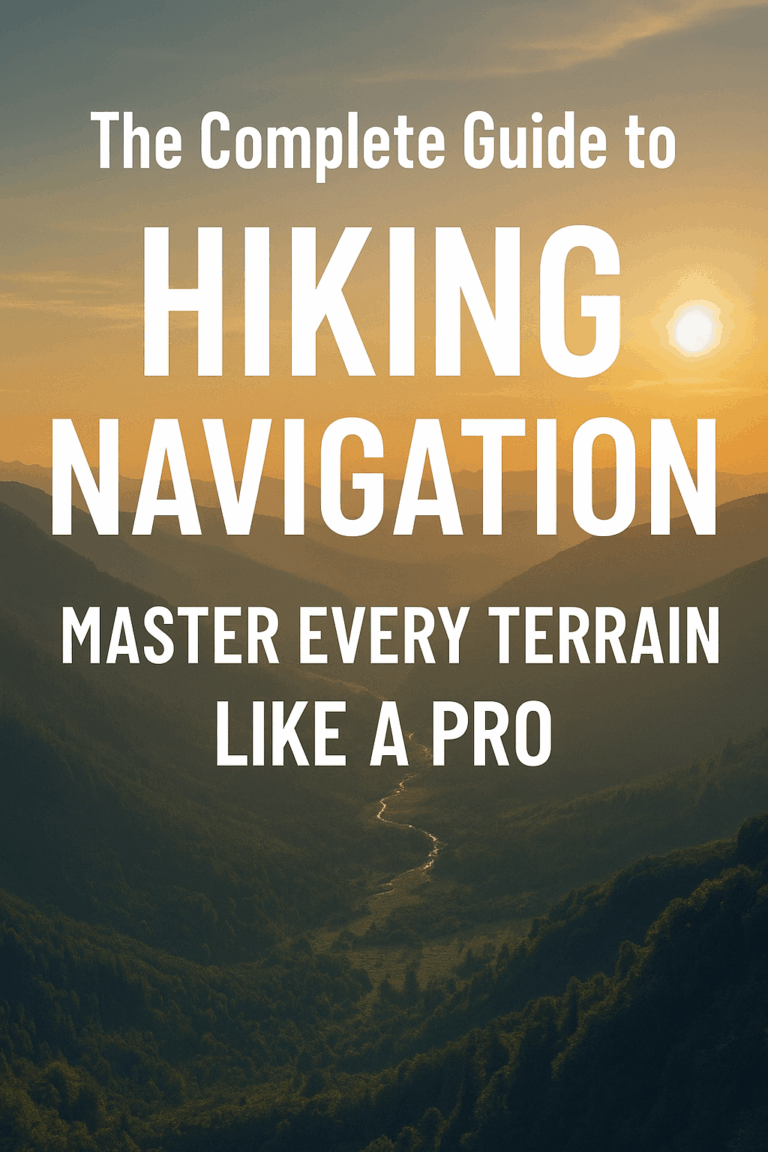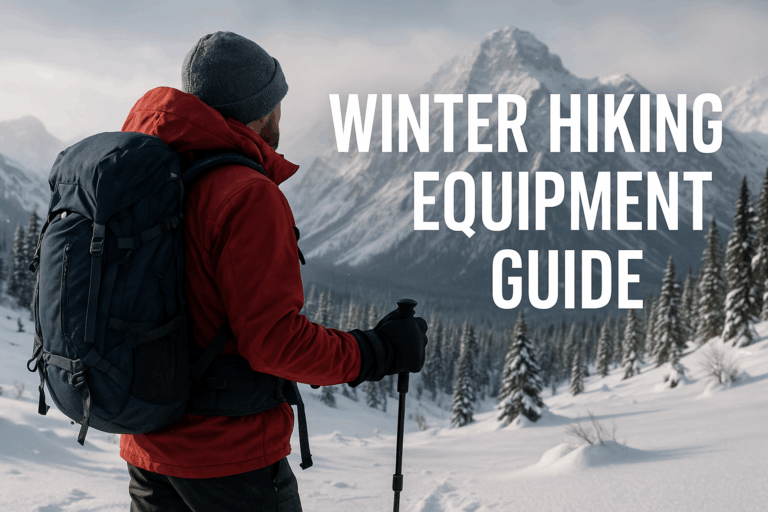Hiking in Rain Gear: Essential Gear and Preparation Tips
Introduction
Ever been caught in a sudden downpour miles from the trailhead? You’re not alone! Studies show that 73% of hikers have experienced unexpected weather changes during their outdoor adventures. But here’s the thing – rain doesn’t have to ruin your hiking plans. With the right rain gear and knowledge, wet weather hiking can actually enhance your outdoor experience, offering unique trail conditions and fewer crowds.
Whether you’re a weekend warrior or seasoned backpacker, mastering the art of wet weather hiking is essential for year-round trail access. From selecting waterproof hiking jackets to preventing hypothermia prevention hiking scenarios, this comprehensive guide will transform you from a fair-weather hiker into an all-conditions adventurer ready for hiking in storms!
Essential Rain Gear for Hiking: Building Your Waterproof Arsenal
Man, let me tell you about the time I learned the hard way why proper rain gear isn’t just a suggestion – it’s literally a survival tool when facing wet weather conditions. Picture this: I’m three miles deep into the Cascade Mountains when what started as light drizzle turned into a full-blown downpour that lasted eight hours straight.
I was wearing what I thought was a waterproof hiking jacket from a big box store. Turns out there’s a massive difference between waterproof and water-resistant gear for wet weather hiking, and I discovered it while shivering uncontrollably at 6,000 feet elevation. Water-resistant means your jacket can handle light moisture for maybe 30 minutes before it starts soaking through. A true waterproof hiking jacket means you could stand under a garden hose and stay bone dry.
The Jacket Dilemma: Getting Your First Layer Right
When you’re shopping for a waterproof hiking jacket, look for that waterproof rating measured in millimeters. Anything above 10,000mm is considered waterproof for serious hiking in rain gear, while 5,000mm and below is just water-resistant. I learned this after my soggy disaster and now I won’t even look at anything under 15,000mm for wet weather hiking.
Check out this guide to the best rain jackets of 2025 for current top picks across different price points.
But here’s where it gets tricky – just because something keeps water out doesn’t mean you won’t turn into a walking sweat lodge when facing wet weather. That’s where breathable rain jacket technology comes in, and honestly, it’s pretty amazing stuff once you understand how it works.
Gore-Tex hiking jacket technology was the original game-changer, and it’s still solid for rain hiking. The membrane has tiny pores that are too small for water droplets to get through but big enough for water vapor (your sweat) to escape. eVent takes a different approach with direct venting that supposedly moves moisture out faster. Then you’ve got proprietary membranes from companies like Patagonia and REI that perform just as well for way less money.
I’ve tested probably a dozen different waterproof hiking jackets over the years for hiking in rain gear, and honestly? That $400 Arc’teryx jacket performs maybe 10% better than my $150 REI Co-op rain jacket. Unless you’re doing serious alpine climbing, save your money for the other wet weather hiking gear you’ll need.
Rain Pants: The Gear Nobody Talks About
Here’s something most hiking blogs won’t tell you – rain pants hiking gear is often more important than your jacket when facing wet conditions. When I’m hiking in steady rain, my legs get soaked way before my torso does. Water runs down your jacket, hits your pants, and if those aren’t waterproof hiking pants, you’re basically wearing wet denim for the rest of your hike.
The problem is, most rain pants are designed for standing around, not wet weather hiking. They’re loud, they restrict movement, and they’ll turn your legs into steam engines. Look for waterproof hiking pants with side zips that run at least halfway down – you’ll need the ventilation and the ability to get them on over muddy hiking boots waterproof or not.
This review of the best rain pants highlights the most breathable and trail-friendly options.
Outdoor Research Ferrosi pants have been my go-to for three years now when facing wet weather. They’re not cheap at around $130, but they’ve kept me dry through everything from Pacific Northwest drizzle to Colorado thunderstorms. The fabric is quiet, they breathe well, and the fit doesn’t make you walk like a robot during wet weather hiking.
Footwear: The Never-Ending Debate
This is where hikers get really passionate about wet weather gear, and I’ve been on both sides of the hiking boots waterproof versus trail running in rain argument. Waterproof hiking boots will keep your feet dry in shallow puddles and light rain, but once water gets in (and it will), they become sponges that never dry out.
Trail running in rain with hiking gaiters rain protection changed my whole approach to wet weather hiking. Your feet might get wet initially, but they dry out fast, and you’re not carrying around waterlogged boots for miles. Here are the best trail running shoes tested for wet and rugged terrain. Hiking gaiters rain guards keep most of the water and debris out, and good trail runners drain and dry incredibly quickly.
Explore top-rated hiking gaiters that add rain and mud protection.
The exception? If you’re hiking through deep puddles, creek crossings, or snow, hiking boots waterproof options make sense. But for typical rainy day hiking tips scenarios, I’ll take the trail runner approach every time when facing wet conditions.
Pack protection is something I wish someone had explained to me earlier when learning about wet weather hiking. A waterproof backpack cover keeps the outside of your pack dry, but water still gets in through the zippers and seams. Your real protection comes from dry bags inside your pack. I use different sized dry bags for different gear – electronics get the waterproof treatment, while extra clothes go in a lighter water-resistant stuff sack.
Here are the best dry bags for organizing and waterproofing your hiking pack.
When weather turns really nasty during rain hiking, having a hiking storm shelter option can literally save your life. A lightweight tarp weighs maybe 8 ounces and gives you options if you need to wait out dangerous conditions. Emergency bivvies are even lighter but they’re truly last resort – you’ll survive, but you won’t be comfortable.
See this roundup of emergency bivy sacks for cold and wet survival situations.
The key with rain hiking essentials is systems thinking. Each piece needs to work with the others, and you need to practice using everything before you’re stuck in a storm three miles from your car while facing wet weather conditions.
Layering Systems for Wet Weather Hiking Success
I’ll never forget the first time I really understood why wet weather layering hiking matters. I was on a four-day backpacking trip in Olympic National Park when we got hit with three straight days of rain and temps hovering around 45 degrees. By day two, half our group was hypothermic because they were wearing cotton everything underneath cheap rain gear.
That trip taught me that staying warm and dry isn’t about having the most expensive jacket when facing wet weather – it’s about building a system where each layer does its specific job. And when one layer fails, the others pick up the slack during wet weather hiking.
Base Layers: Your Foundation Layer
Your base layer is doing the hardest work of any piece of clothing you’re wearing during wet weather hiking. It needs to move sweat away from your skin while you’re working hard, then keep you warm when you stop moving. Cotton is absolutely useless here – it absorbs moisture, holds it against your skin, and takes forever to dry out.
CleverHiker reviews the best base layers for moisture management and insulation.
Merino wool changed my whole approach to hiking base layers moisture wicking clothing. It regulates temperature naturally, doesn’t stink even after multiple days (trust me, I’ve tested this), and keeps you warm even when it’s damp. The downside? It’s expensive and not as durable as synthetic options for rain hiking.
Synthetic base layers like polyester blends are tougher and dry faster than wool, but they can get pretty funky after a day or two of wet weather hiking. OutdoorGearLab’s base layer reviews include Smartwool’s popular options for wet hiking. I’ve found that brands like Patagonia Capilene and Smartwool make synthetic base layers that manage odor way better than the cheap stuff you’ll find at discount stores.
Here’s something most people don’t consider – weight matters for hiking base layers moisture wicking clothing. A lightweight base layer works great when you’re moving, but if temps drop or you’re taking long breaks during wet weather adventures, you might need a midweight option. I usually pack both on trips where weather could change dramatically.
Insulation: Staying Warm When Everything’s Damp
Traditional down insulation is amazing until it gets wet, then it’s basically useless for rain hiking. I learned this lesson on a miserable trip in the North Castles where my down jacket got soaked and compressed into a thin, cold shell. Synthetic insulation like PrimaLoft or Climashield keeps working even when damp, though it’s heavier and doesn’t compress as well.
Explore the best synthetic insulated jackets for wet and cold conditions.
The game-changer for me was discovering hybrid insulation jackets for wet weather hiking. These use down in areas that stay dry (like your back under a pack) and synthetic fill in high-moisture zones like under your arms. Patagonia’s Micro Puff and Arc’teryx’s Atom series both use this approach, and they’ve kept me comfortable in conditions that would’ve had me shivering with traditional gear.
Fleece deserves a mention here too for wet weather hiking clothes. It’s not as warm per ounce as down, but fleece performs incredibly well when wet and dries fast. A good fleece jacket can be your primary insulation layer when hiking in rain gear, and it doubles as a comfortable camp layer when the rain stops.
Shell Layer Ventilation: The Science of Staying Dry
Most people think a hiking shell jacket rain protection’s only job is keeping water out, but managing moisture from the inside is just as important when facing wet conditions. Pit zips are absolutely essential – they’re the fastest way to dump heat when you’re working hard. I look for pit zips that run at least 8 inches and have two-way zippers so you can open them from the bottom for extra airflow.
Chest pockets with mesh backing work as passive vents when you unzip them slightly during wet weather adventures. Some shells have back vents or underarm panels made from more breathable fabric. These features might seem minor, but they make a huge difference on long, steep climbs in wet weather hiking.
The ventilation on your rain pants matters too when facing wet conditions. Side zips that run knee-to-ankle let you regulate temperature without taking the pants completely off. Some pants have mesh-lined thigh vents, which work great if you’re not wearing a pack with a hip belt.
The Cotton Problem
I can’t stress this enough – cotton kills in wet, cold conditions when facing challenging weather. Cotton absorbs water, loses its insulating properties when wet, and takes forever to dry. This includes cotton blends, denim, and even cotton underwear and waterproof hiking socks alternatives.
I’ve seen people suffer from mild hypothermia in 50-degree weather because they were wearing cotton base layers under their rain gear. When cotton gets wet from sweat or external moisture during wet weather adventures, it conducts heat away from your body 25 times faster than dry cotton. That’s not a risk worth taking.
Temperature Regulation in the Rain
Managing your body temperature during rain hikes is like being a human thermostat when facing wet weather. You’re constantly adjusting layers, opening and closing vents, and trying to stay in that sweet spot where you’re not overheating or getting chilled.
Start cool when you begin hiking. If you’re comfortable standing around, you’ll overheat within the first 10 minutes of rain hiking. I usually start with just a base layer and shell, then add insulation when I stop for breaks or if conditions get worse.
The key is making adjustments before you need them during wet weather hiking. If you wait until you’re already overheating to open pit zips, you’ve already soaked your base layer with sweat. If you wait until you’re cold to add insulation, you’re already behind the curve when facing challenging conditions.
Quick-Dry Options for Multi-Day Adventures
On longer trips, having wet weather hiking clothes that dry overnight becomes crucial. Synthetic fabrics dry way faster than natural fibers, and some are specifically designed for quick drying. Hiking pants made from nylon with a DWR treatment hiking waterproofing shed water and dry in a few hours even in humid conditions.
I always pack an extra base layer for multi-day trips in wet weather, but everything else needs to be able to dry out while I sleep. Hanging damp clothes in your tent vestibule usually works, though you might need to wear slightly damp clothes in the morning. It sounds miserable, but body heat will finish the drying process pretty quickly once you start moving.
The bottom line with wet weather layering hiking systems is that practice makes perfect. Test your system on day hikes before committing to it on longer trips, and always pack one more insulation layer than you think you’ll need when facing challenging conditions.
Safety Considerations and Risk Management in Rain
Three years ago, I almost became a statistic on what should’ve been an easy day hike while hiking in rain gear. The weather forecast called for light showers, but I ended up caught in a surprise thunderstorm with a hiking partner who was showing early signs of hypothermia. That experience completely changed how I approach storm hiking safety.
Recognizing Hypothermia Before It’s Too Late
Hypothermia prevention hiking awareness doesn’t just happen in freezing temperatures – I’ve seen it occur in 50-degree weather when people get soaked and can’t regulate their body temperature while hiking in rain gear. The scary part is that the person experiencing it often doesn’t realize what’s happening.
Watch for the “umbles” – stumbling, mumbling, fumbling, and grumbling during wet weather safety scenarios. If your hiking partner starts moving clumsily, slurring words, having trouble with simple tasks like opening their pack, or becoming unusually irritable, those are red flags when hiking in rain gear. Uncontrollable shivering is an early warning sign, but when shivering stops, that’s actually more dangerous because it means the body is shutting down.
The key is stopping hypothermia before it starts during hiking in rain gear. Change out of wet clothes immediately when you stop hiking. Get calories and warm fluids into people who are getting cold. I always carry extra layers specifically for this situation, even if it means carrying more weight.
Trail Conditions: When Everything Changes
Rain transforms trails in ways that catch experienced hikers off guard when hiking in rain gear. That rock scramble you cruised up last month becomes a slip-and-slide death trap when wet. Wooden bridges and boardwalks turn into ice rinks. Tree roots become banana peels waiting to send you face-first into the dirt during rainy trail conditions hiking.
I’ve learned to cut my normal hiking pace by at least 30% in wet conditions when hiking in rain gear. It’s not just about being careful – your body works harder on unstable terrain, and you’ll tire faster than expected. Muddy sections can be deceiving too. What looks like shallow mud might be knee-deep, and getting stuck can quickly turn into a serious situation if you’re alone.
Lightning: The Real Killer
Lightning kills more hikers than any other weather-related hazard, and most people have no idea how to stay safe when hiking in storms. The 30-30 rule is crucial: if you hear thunder within 30 seconds of seeing lightning, seek shelter immediately and don’t resume hiking until 30 minutes after the last thunder.
But here’s the problem – good shelter is rarely available on most trails when hiking in rain gear. Your car is ideal, but buildings work too. Caves are tricky because you need to stay away from the walls. If you’re stuck in the open, avoid ridgelines, tall isolated trees, and metal objects. Crouch low with your feet together, but don’t lie flat.
I carry a small weather radio on trips where afternoon thunderstorms are common during hiking in rain gear. Those extra few minutes of warning can be the difference between reaching shelter and being caught exposed on a ridge.
Navigation When You Can’t See
Reduced visibility turns familiar trails into confusing mazes during wet weather navigation hiking. I’ve gotten turned around on trails I’ve hiked dozens of times simply because everything looks different in heavy rain and fog when hiking in rain gear. GPS units and smartphone apps become essential tools, but they’re not foolproof.
Download offline maps before your trip – cell service disappears right when you need it most during hiking in rain gear. Keep your GPS device in a waterproof case, and carry extra batteries. I learned this lesson when my phone died halfway through a particularly soggy hike in the Cascades.
Stream Crossings: Respect Rising Water
Fast-moving water is incredibly dangerous, and streams can rise surprisingly quickly during heavy rain when hiking in rain gear. Water that was ankle-deep in the morning might be waist-deep and raging by afternoon. If you can’t see the bottom or the current looks strong, don’t cross.
I’ve turned back from hikes because stream crossings became too dangerous during wet weather hiking. It’s frustrating, but drowning isn’t worth bagging a peak. Always cross streams at the widest, shallowest point, and use trekking poles for stability when hiking in rain gear.
For emergency communication, satellite messengers like Garmin inReach devices work when cell phones don’t. They’re expensive, but being able to call for help from anywhere is worth the cost on serious trips when hiking in rain gear.
The bottom line with rain hiking safety is conservative decision-making. When conditions deteriorate, the smart move is often turning back, even if you’re close to your destination while hiking in rain gear.
Pre-Hike Planning for Rainy Day Adventures
I used to be that guy who’d check the weather five minutes before leaving for a hike and call it good. Then I spent a miserable 12 hours getting pounded by rain that I could’ve easily avoided if I’d actually understood what the forecast was telling me about hiking in rain gear conditions. Now I’m obsessive about rain hiking preparation, and it’s made my rainy day hiking way more enjoyable.
Reading Weather Forecasts Like a Pro
Most people just look at the little rain cloud icon and think they know what’s coming for their hiking in rain gear adventure. But there’s a huge difference between scattered showers and steady precipitation, and understanding hourly forecasts can save your trip. I use multiple sources now – Weather.gov, Mountain-Forecast.com, and local weather services all give slightly different information.
Pay attention to precipitation probability AND intensity predictions when planning hiking in rain gear. 40% chance of rain could mean brief afternoon showers or it could mean steady drizzle for hours. Wind speed matters too – 15 mph winds in rain feel way worse than calm conditions. I’ve learned that anything over 20 mph makes hiking pretty miserable, especially on exposed ridges.
Temperature trends are crucial for layering decisions when hiking in rain gear. If it’s going to be 45 degrees and raining in the morning but warming to 60 by afternoon, your gear strategy completely changes. I always check overnight lows too, because wet gear combined with dropping temperatures can create dangerous situations fast.
Trail Selection: Not All Trails Handle Rain the Same
Some trails are built for drainage, others turn into rivers when you’re hiking in rain gear. I’ve hiked trails that were completely fine in steady rain, and others where light drizzle created muddy disasters. Generally, well-maintained trails with good drainage systems handle rain better than old logging roads or social trails.
Ridge trails with rocky surfaces shed water quickly, but they’re more exposed to wind and lightning during hiking in rain gear. Forest trails stay protected from wind but can become muddy slogs. I avoid trails that cross multiple streams during rainy periods – those crossings might be impossible by the time you reach them.
Desert trails are tricky because they can flash flood, but mountain trails at elevation bring hypothermia risks when hiking in rain gear. I’ve started keeping notes about how different trails handle wet conditions, and it’s been incredibly helpful for planning future trips.
Gear Strategy and Weight Reality
Rain hiking preparation requires more gear, period. Your pack’s going to be heavier when hiking in rain gear, and you need to accept that reality during planning. I typically add 3-5 pounds of rain-specific gear – extra layers, dry bags, backup socks, emergency shelter options.
My rainy day hiking tips checklist includes stuff I don’t normally carry: an extra base layer, waterproof gloves, a lightweight tarp, and way more food than usual because your body burns more calories staying warm when hiking in rain gear. I pack everything in dry bags now, not just the essentials. Learned that lesson when “water-resistant” pockets weren’t.
Pack weight matters more in wet conditions because you’re working harder on slippery terrain when hiking in rain gear. I’ll actually remove non-essential items to make room for weather protection. That camera lens I wanted to bring? Not worth it if it means leaving behind an extra insulation layer.
Communication is Life Insurance
I used to think leaving hiking plans was only necessary for backcountry trips, but wet weather changes everything when hiking in rain gear. When conditions deteriorate, even day hikes can become overnight survival situations. Now I always text someone my specific trail, expected return time, and backup plans.
Include details about your vehicle in those plans – what you’re driving, where you’re parking, even your license plate. If search and rescue needs to find you, every detail helps when hiking in rain gear. I also share my phone’s location with family members on longer hikes, though service can be spotty in bad weather.
Turnaround Times and Escape Routes
This is where most people mess up – they get target fixation and ignore warning signs when hiking in rain gear. I now set firm turnaround times before leaving home, and I stick to them regardless of how close I am to my destination. If I planned to turn around at 2 PM and it’s 2:01, I’m heading back.
Study your route beforehand and identify bail-out options for hiking in rain gear scenarios. Most trail maps show alternate routes or shorter loops that can get you back to your car faster if weather deteriorates. I’ve used these escape routes more times than I care to admit, and they’ve saved me from some genuinely dangerous situations.
Seasonal Considerations for Rain Hiking
Spring rain is different from fall rain when hiking in rain gear, and your gear needs change accordingly. Spring storms tend to be warmer but windier. Fall rain often comes with dropping temperatures that can catch you off guard. Late season storms might bring snow at elevation, even when it’s raining at the trailhead.
I adjust my gear seasonally now for hiking rainy season conditions. Spring gets lighter rain protection but more wind layers. Fall requires serious insulation backup because hypothermia risk is higher when hiking in rain gear. Winter rain hiking is honestly just asking for trouble in most climates – that’s indoor training season for me.
The key with rainy day planning is being honest about conditions and your skill level when considering hiking in rain gear. There’s no shame in choosing an easier trail or postponing a trip when weather looks genuinely dangerous.
Techniques for Staying Comfortable While Hiking in Rain
The first time I actually enjoyed hiking in rain gear was a complete accident. I’d gotten caught in an unexpected downpour on a section of the Pacific Crest Trail, and instead of being miserable, I found myself laughing and taking photos. That’s when I realized rain hiking comfort is mostly about technique, not just having expensive waterproof outdoor gear.
Ventilation: The Sweaty Truth Nobody Talks About
Here’s what gear reviews don’t tell you – you’ll probably get wetter from your own sweat than from the rain if you don’t manage ventilation properly when hiking in rain gear. I used to zip everything up tight and wonder why I felt clammy and gross after an hour of hiking.
Now I start hikes feeling slightly cool and adjust constantly during hiking in rain gear. Pit zips are your best friend, but don’t just crack them open – pull those zippers down aggressively when you’re working hard. I open mine completely on steep climbs, even in steady rain. You might get a little wet, but it’s better than turning your jacket into a personal sauna.
Chest vents work great too, but timing matters when hiking in rain gear. Open them before you start overheating, not after you’re already soaked with sweat. I’ve learned to read my body’s signals – the moment I feel warmth building up, something needs to open up for airflow.
Your rain pants need attention too when hiking in rain gear. Side zips should be your first line of defense against overheating legs. If your pants don’t have them, honestly consider getting different pants. The difference is night and day.
Foot Care: Keeping Your Foundation Happy
Wet feet are inevitable when hiking in rain gear, but trench foot and nasty blisters aren’t. I carry at least two pairs of waterproof hiking socks on rain hikes now, and I’m not afraid to change them mid-hike if my feet are getting wrinkled and pruney.
Merino wool socks handle moisture way better than synthetic options when hiking in rain gear. They stay warmer when wet and don’t smell as bad after hours of hiking. I learned this after developing painful hot spots in cheap synthetic socks that turned into wet, smelly messes.
Foot powder might seem old-school, but it works when hiking in rain gear. A light dusting before putting on dry socks can prevent issues for hours. I use anti-chafing balm on my heels and toe areas where blisters typically form. It creates a barrier that lasts even when everything gets soaked.
Keeping Something Dry for Later
This is probably the most important comfort tip I can share – always keep one complete set of dry clothes sealed in a waterproof stuff sack when hiking in rain gear. Not water-resistant, waterproof. When you’re cold, wet, and exhausted, having truly dry clothes to change into can literally save your day.
I pack a dry base layer, dry socks, and a warm hat in a sealed dry bag that I don’t open unless it’s an emergency or I’m done hiking for the day when hiking in rain gear. It’s tempting to dig into this stash mid-hike, but resist the urge. That dry clothing is your insurance policy.
Fuel Your Body for the Cold
Cold, wet hiking burns way more calories than fair weather hiking when you’re hiking in rain gear. Your body’s working overtime to stay warm, and you’ll bonk faster than usual if you’re not eating enough. I pack about 30% more food on rain hikes, focusing on high-calorie options that don’t require cooking.
Hot drinks make a massive psychological difference when hiking in rain gear. I carry a lightweight thermos with hot tea or coffee, and taking warm sips throughout the day helps maintain core temperature and morale. Instant hot chocolate packets weigh almost nothing and provide quick energy plus comfort.
Fat and protein become more important in wet conditions when hiking in rain gear. Nuts, energy bars with real substance, and even jerky help your body generate heat from the inside. I avoid relying too heavily on simple sugars because the energy crash hits harder when you’re already fighting cold conditions.
Mental Game: Embracing the Suck
Rain hiking is largely mental, and I’ve found that fighting the conditions makes everything worse when hiking in rain gear. Instead of wishing it would stop raining, I try to find things to appreciate about the experience. The way water beads on spider webs, how different the forest smells, the satisfaction of staying comfortable despite challenging conditions.
I play little games with myself – counting different types of mushrooms, looking for wildlife that comes out in the rain, or challenging myself to find five beautiful things during the hike when hiking in rain gear. It sounds cheesy, but it works.
Having realistic expectations helps too when hiking in rain gear. I’m not going to set any speed records in the rain, and that’s okay. The goal shifts from performance to simply enjoying being outside despite the weather.
Capturing Rain Magic
Rain creates incredible photographic opportunities when hiking in rain gear, but protecting your camera is crucial. I use a simple plastic bag with a hole cut for the lens – way cheaper than fancy rain covers and just as effective.
Look for dramatic cloud formations, waterfalls that are fuller than usual, and the way rain transforms familiar landscapes when hiking in rain gear. Water droplets on leaves make great macro subjects. The key is being patient and watching for brief moments when the light breaks through the clouds.
Overcast conditions create naturally diffused lighting that’s perfect for forest photography during hiking in rain gear. Colors appear more saturated, and you don’t have to deal with harsh shadows. Some of my favorite trail photos were taken during what most people would consider terrible weather.
The secret to rain hiking comfort is accepting that you’ll get wet and planning accordingly when hiking in rain gear. Once you stop fighting the conditions and start working with them, rain hikes become adventures instead of endurance tests.
Gear Maintenance and Care After Wet Weather Hikes
I’ll be honest – I used to just throw my wet gear in the garage and forget about it until my next hike. Then I opened my pack three weeks after a soggy Olympic Peninsula trip and nearly passed out from the smell. Worse, my expensive rain jacket had developed a funky coating that made it about as waterproof as a paper towel. That’s when I learned rain gear maintenance hiking care isn’t optional if you want your stuff to last.
Drying: More Than Just Hanging Things Up
Getting gear properly dry is trickier than it seems after hiking in rain gear. I used to think hanging my rain jacket on a door was sufficient, but trapped moisture in seams and pockets can cause problems for weeks. Now I turn everything inside out and make sure air can circulate through all the nooks and crannies.
Forced air helps way more than just hanging stuff in still air for hiking gear waterproofing maintenance. I use a box fan pointed at wet gear, which cuts drying time in half. For boots, I stuff them with newspaper that I change every few hours – it pulls moisture out faster than just leaving them empty after hiking in rain gear.
Heat sources are tempting but dangerous when caring for waterproof trail gear. I ruined a pair of rain pants by putting them too close to a wood stove. The fabric actually melted slightly and lost its waterproofing. Room temperature drying takes longer but won’t damage technical fabrics.
Bringing DWR Back to Life
DWR treatment hiking waterproofing is what makes water bead up and roll off your rain gear instead of soaking in after hiking in rain gear. When it stops working, your jacket feels soggy even though it’s technically still waterproof. The good news is you can usually restore it without expensive reproofing treatments.
Sometimes DWR just needs cleaning to work again on your hiking gear waterproofing. Body oils, dirt, and detergent residue can mask the coating. I wash rain gear in tech-specific detergent like Nikwax Tech Wash, then tumble dry on low heat. The heat actually reactivates DWR that’s still there but not functioning after hiking in rain gear.
If cleaning doesn’t work, spray-on DWR treatments like Nikwax TX.Direct are pretty easy to apply to waterproof trail gear. Clean the gear first, then spray evenly while it’s still damp. The key is following up with heat – either tumble drying or using a hair dryer on low setting.
Boot Recovery After Muddy Disasters
Muddy boots are inevitable when hiking in rain gear, but letting that mud dry and harden makes cleaning way harder. I learned to rinse boots immediately after muddy hikes, even if I’m tired and just want to get home. A quick spray with the garden hose saves hours of scrubbing later.
For leather boots, letting them dry completely before cleaning is actually better for maintaining waterproof hiking equipment. Trying to clean wet leather can damage it. Once dry, I use a stiff brush to remove dried mud, then condition the leather with something like Obenauf’s or mink oil.
Waterproof boot treatments need reapplication more often than people think after hiking in rain gear. I retreat my boots after every 4-5 muddy hikes, or when I notice water isn’t beading on the surface anymore. It’s way cheaper than replacing boots that fail because the waterproofing gave out.
Pack Cleaning That Actually Works
Packs take serious abuse in wet conditions, and cleaning them properly requires more than a quick wipe-down after hiking in rain gear. I empty everything and shake out all the grit and debris first. Amazing how much crud accumulates in those bottom corners.
Most technical packs can’t go in washing machines – the agitation damages coatings and can mess up zippers on your hiking gear for rain. I wash mine in the bathtub with tech detergent and a soft brush for stubborn spots. Pay special attention to the hip belt and shoulder straps where salt from sweat builds up.
Zippers need special attention after wet hikes when you’ve been hiking in rain gear. I run a damp cloth along the zipper teeth to remove grit, then apply zipper lubricant. DryGuy makes a good one that I keep in my gear maintenance kit. Neglected zippers fail at the worst possible moments.
Storage: Preventing the Funk
Storing damp gear is asking for mildew problems after hiking in rain gear. Even gear that feels dry might have moisture trapped in seams or padding. I learned this lesson when my sleeping bag developed black spots after being stored slightly damp for a month.
Everything needs to be completely dry before long-term storage of your rain proof hiking gear. For down insulation, this means fluffing it up and making sure there are no compressed areas that might still hold moisture. Synthetic insulation is more forgiving but still needs proper drying.
I use moisture absorber packets in my gear storage containers for hiking gear waterproofing maintenance. DampRid or similar products create a dry environment that prevents mildew growth. Cedar blocks help with odors and supposedly repel insects too.
Never store gear in plastic bags long-term after hiking in rain gear. Even dry gear can develop moisture problems without air circulation. I use mesh laundry bags or just leave things loose on shelves where air can move around them.
Knowing When to Say Goodbye
This is the hardest part for gear nerds like me – admitting when something needs replacement after years of hiking in rain gear. Waterproof gear has a finite lifespan, and trying to extend it beyond that point can be dangerous.
Seam tape failure is usually the beginning of the end for rain gear used for hiking in rain gear. When you see those plastic strips peeling away from seams, the jacket’s waterproofing is compromised. You can try seam sealer, but it’s usually a temporary fix.
Fabric delamination is another death sentence for waterproof outdoor gear. This happens when the waterproof membrane separates from the face fabric, creating bubbles or peeling areas. There’s no fixing this – it’s time for new gear.
For boots, sole separation is obvious, but upper fabric breakdown is harder to spot after extensive hiking in rain gear. If water is getting through areas that aren’t seams, the fabric itself has failed. Waterproofing treatments won’t help with actual fabric failure.
I keep a gear log noting purchase dates and major repairs for all my rain hiking essentials. When I’m spending more time maintaining something than using it, or when maintenance costs approach replacement costs, it’s time to shop for new gear.
The key with gear maintenance is consistency after hiking in rain gear. Spending 30 minutes after each wet hike saves hours of deep cleaning later, and your gear will last years longer with proper care.
Conclusion
Hiking in rain gear isn’t just about staying dry – it’s about expanding your outdoor opportunities and building confidence in all conditions! From selecting breathable waterproof hiking jackets to mastering wet weather layering hiking techniques, you now have the knowledge to tackle any trail regardless of weather. Remember, the best rain hiking essentials are the gear you know how to use effectively when hiking in rain gear.
The journey from fair-weather hiker to all-conditions adventurer requires practice and patience. Your first few experiences hiking in rain gear might feel uncomfortable or overwhelming, but each wet weather hiking adventure builds valuable skills. You’ll learn to read weather patterns better, understand how your body responds to different conditions, and develop the confidence that comes from knowing you can handle whatever nature throws at you.
Investing in quality hiking gear for rain is important, but technique and knowledge matter more than expensive equipment when hiking in rain gear. A hiker with basic gear who understands wet weather layering hiking principles will stay more comfortable than someone with top-shelf equipment who doesn’t know how to use it properly. Focus on mastering the fundamentals before upgrading to premium waterproof outdoor gear.
Safety should always be your top priority when hiking in rain gear. The mountains will be there tomorrow, but poor decisions in wet conditions can have permanent consequences. Practice hypothermia prevention hiking awareness, respect the power of lightning during hiking in storms, and never hesitate to turn back when conditions exceed your skill level or comfort zone.
One of the most rewarding aspects of mastering hiking in rain gear is discovering how different the wilderness becomes in wet weather. Waterfalls roar with increased volume, forests come alive with unique scents and sounds, and wildlife behaves differently. You’ll often have popular trails to yourself during rainy conditions, creating intimate experiences with nature that fair-weather hikers never enjoy.
The mental benefits of conquering challenging conditions shouldn’t be underestimated when hiking in rain gear. There’s something deeply satisfying about completing a hike in conditions that would send most people indoors. This confidence carries over into other areas of life, proving that with proper preparation and determination, you can handle more than you initially thought possible.
Remember that hiking rain gear reviews and recommendations are just starting points. What works perfectly for one hiker might not suit your body type, local climate, or hiking style. Test everything on shorter hikes before committing to longer adventures. Pay attention to how your gear performs in different conditions and adjust your setup accordingly.
Maintenance of your rain proof hiking gear is an investment in future adventures. Properly cared for equipment will serve you for years, while neglected gear fails when you need it most. Develop good habits around cleaning, drying, and storing your equipment after every hiking in rain gear expedition.
Don’t forget about the small details that make big differences in comfort when hiking in rain gear. Waterproof hiking socks, hiking gaiters rain protection, and even simple things like keeping a dry hat in your pack can transform a miserable experience into an enjoyable one. These details become second nature with experience.
The hiking community has a wealth of knowledge about wet weather hiking techniques. Don’t hesitate to ask experienced hikers about their rain hiking strategies, join online forums dedicated to hiking gear waterproofing discussions, or attend workshops on wet weather safety. Learning from others’ mistakes is much more pleasant than making them yourself.
As you build experience with wet weather hiking, consider gradually increasing the difficulty of conditions you’re willing to tackle. Start with light drizzle on familiar trails, then progress to steady rain, and eventually work up to hiking monsoon season conditions if your local climate allows. This progressive approach builds skills safely while expanding your comfort zone.
Finally, remember that every expert at rain hiking started as a beginner. Those Instagram-worthy photos of hikers standing confidently in dramatic weather represent years of learning, mistakes, and gradual skill building. Be patient with yourself as you develop these capabilities.
Ready to embrace wet weather adventures? Start by investing in quality rain gear that fits your hiking style and local climate. Check out the best rain jackets of 2025 if you’re considering a gear upgrade. Test your gear on shorter hikes before committing to longer adventures. Most importantly, respect the power of weather and always prioritize safety over summit goals when facing challenging conditions.
Your next rainy day adventure awaits – don’t let a little precipitation keep you indoors! With proper preparation, the right mindset, and quality rain hiking essentials, you’ll discover that some of your most memorable outdoor experiences happen when the weather is less than perfect. The trails are calling, regardless of what the sky is doing above them.

